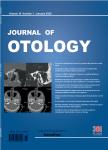Standardization of experimental animals temporal bone sections
Standardization of experimental animals temporal bone sections作者机构:Center for Hearing and Deafness Department of Communicative Disorders and Sciences University of New York at Buffalo Department of Otolaryngology Head and Neck Surgery Sun Ya-sen University Third Hospital Department of Otolaryngology Head and Neck Surgery the Sixth People's Hospital of Shanghai Jiao Tong University Department of Otolaryngology Head and Neck Surgery Central South University Xiangya Hospital Department of Otolaryngology Head and Neck Surgery Union Hospital Tongji Medical College of Huazhong University of Science & Technology
出 版 物:《Journal of Otology》 (中华耳科学杂志(英文版))
年 卷 期:2015年第10卷第2期
页 面:66-71页
核心收录:
学科分类:1002[医学-临床医学] 100213[医学-耳鼻咽喉科学] 10[医学]
主 题:Experimental animal Temporal bone section Temporal bone Collodion embedding Decalcification
摘 要:Preparation of the temporal bone for light microscopy is an important step in histological studies of the inner ear. Due to the complexity of structures of the inner ear, it is difficult to measure or compare structures of interest without a commonly accepted standardized measure of temporal bone sections. Therefore, standardization of temporal bone sections is very important for histological assessment of sensory hair cells and peripheral ganglion neurons in the cochlear and vestibular systems. The standardized temporal bone sectioning is oriented to a plane parallel to the outer and internal auditory canals. Sections are collected from the epitympanum to the hypotympanum to reveal layers in the order of the crista ampullaris of the superior and lateral semicircular canals, macula utriculi and macula sacculi, superior vestibular ganglion neurons, macula of saccule and inferior vestibular ganglion neurons, cochlear modiolus, endolymphatic duct and endolymphatic sac, and finally the crista ampullaris of the posterior semicircular canal. Moreover, technical details of preparing for temporal bone sectioning including fixation, decalcification, whole temporal bone staining, embedding penetration, and embedding orientation are also discussed.



